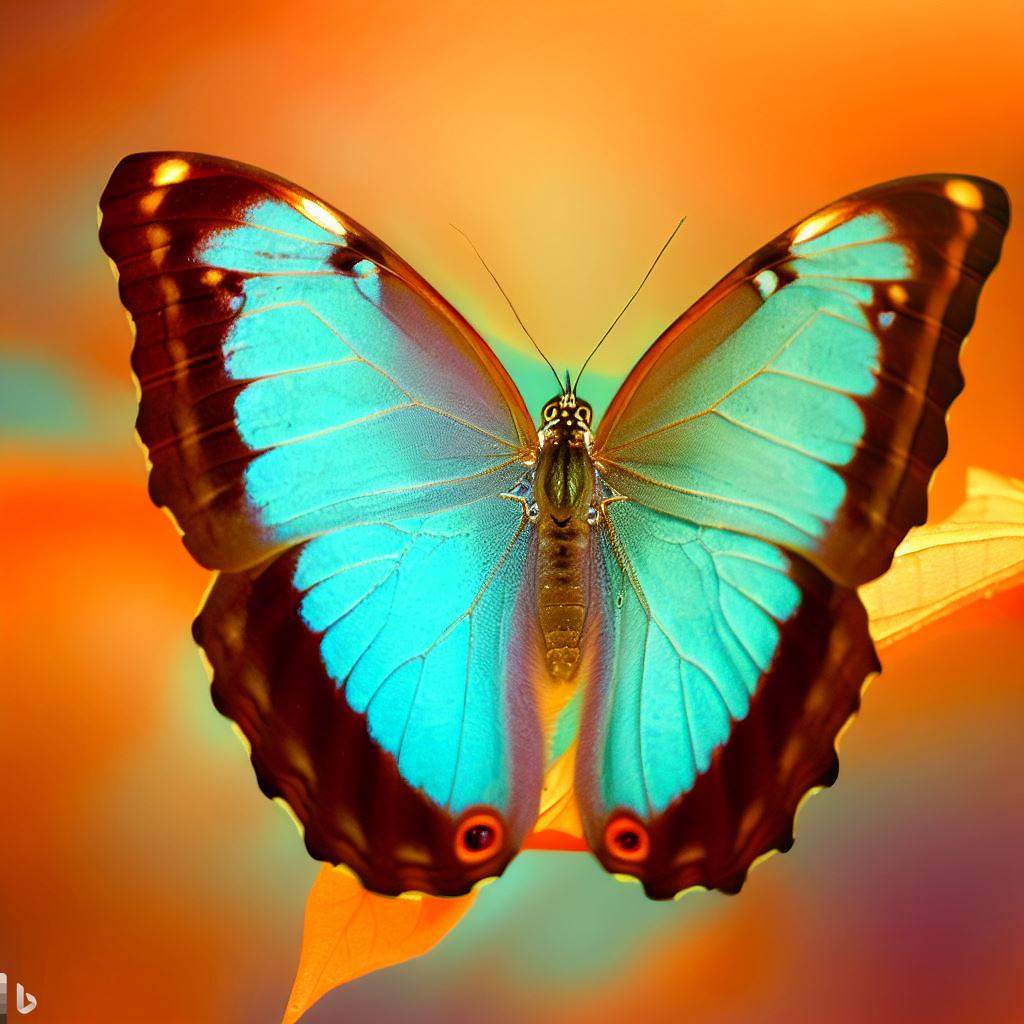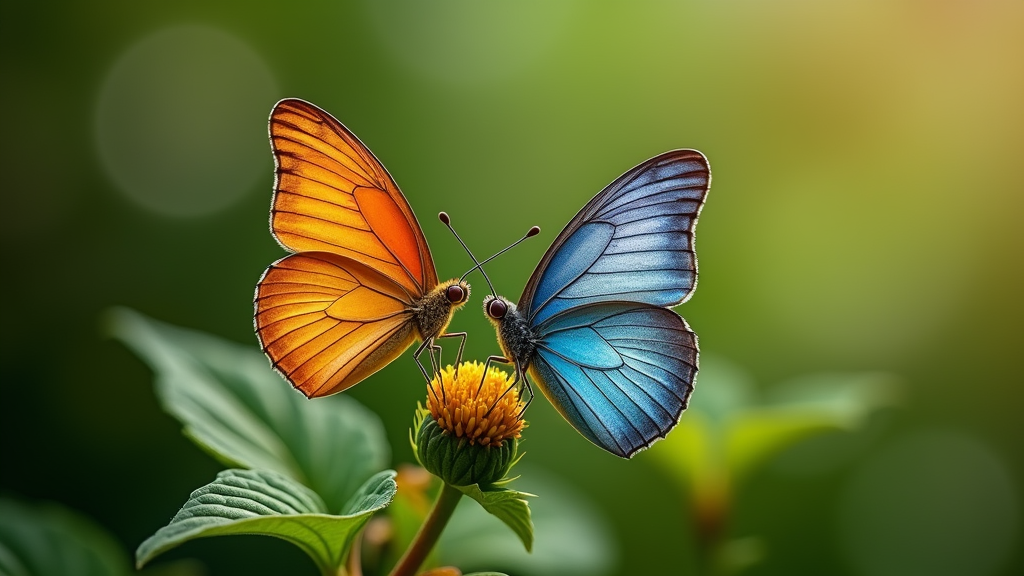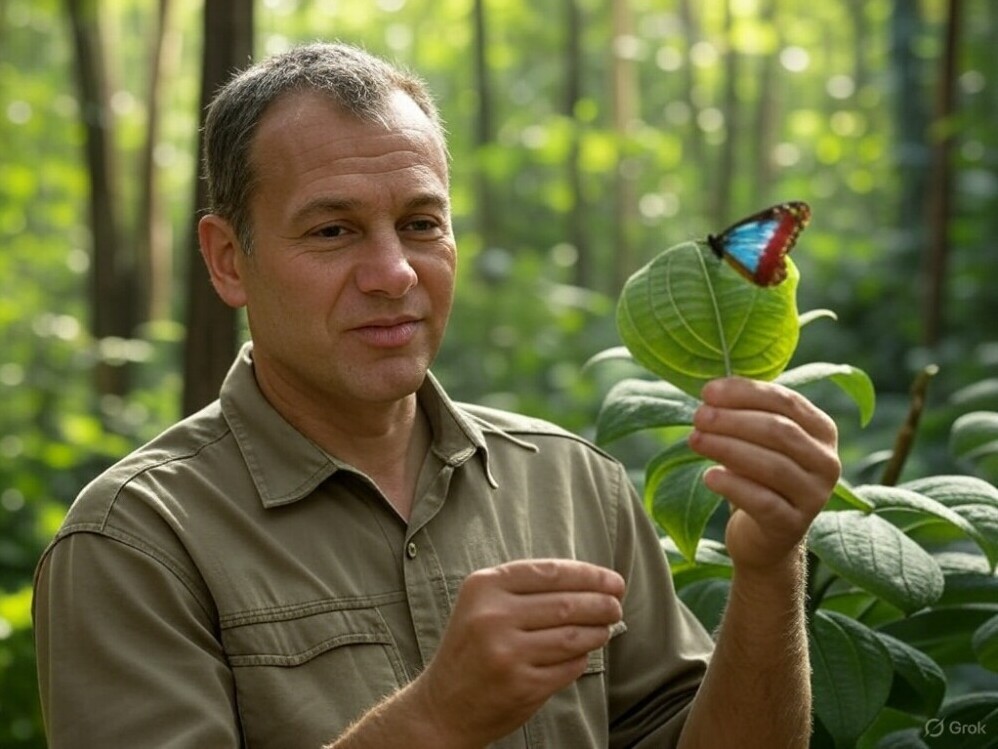Home for Butterflies
.jpg)
Welcome to the mesmerizing realm of the “Home for Butterflies!” We’ll explore how to make a haven for these magnificent insects.
Providing an abundant supply of nectar-rich flowers is vital. Lantanas, coneflowers, and zinnias feed butterflies.
Host plants act like nurseries for caterpillars. Milkweeds, passionflowers, and dill nourish caterpillars and adults.
Diverse vegetation creates an ecosystem with life. Native grasses, shrubs, and trees attract pollinators.
Water features like shallow pools with rocks or pebbles provide water. Damp soil patches give them minerals.
Organic practices are important. Avoid pesticides. Use companion planting and crop rotation to keep balance.
Vibrant flowers, host plants, diverse vegetation, water features, and organic practices create a haven.
Abundant food, shelters, and a pesticide-free environment make our butterfly abode a place of respite.
Let’s embrace nature and make the perfect “Home for Butterflies”!
Importance of Home for Butterflies
Butterflies are essential for our ecosystem. They need a good home. This means they have access to food, shelter, and mates.
A butterfly home should have diverse plants. These give them nectar and places to lay eggs.
To attract butterflies, plant flowers like milkweed, aster, and coreopsis. Also, avoid using pesticides.
Butterflies bring joy to humans. They have vibrant wings and shapes. Imagine a garden full of fluttering butterflies!
Butterflies are pollinators. They help plants reproduce. Without them, many plants would struggle.
Time to take action! Make a butterfly garden or join a conservation effort. This preserves the butterflies and environment.
Let’s appreciate nature and take pride in being stewards of our planet. Butterflies offer us charm and grace.
Factors to Consider in Creating a Butterfly-Friendly Home
To create a butterfly-friendly home with factors that attract these beautiful creatures, consider the following: providing food sources, creating shelter and resting spots, and including water sources.
These three sub-sections offer solutions to support butterflies in your environment, ensuring they thrive and make your space their sanctuary.
Providing Food Sources
Creating a butterfly-friendly home?
Start by providing food sources. Butterflies need specific plants for nourishment.

Check out this table for info on which plants attract certain species:
| Plant | Butterfly Species | Blooming Season |
|---|---|---|
| Milkweed | Monarch Butterfly | Summer |
| Lantana | Painted Lady Butterfly | Spring to Fall |
| Passionflower | Gulf Fritillary Butterfly | Summer to Fall |
Nectar-rich flowers like coneflowers and bee balm provide food all year round. Special plants, like spicebush, also attract certain butterflies – in this case, the spicebush swallowtail due to its aromatic leaves.
My friend witnessed this firsthand: Passionflowers in her garden attracted many butterflies. It was magical!
Choose the right plants and have a variety of blooming seasons – this way, you can create a habitat that supports butterflies throughout their lifecycle.
Get creative and see your butterfly-friendly home come to life!
Creating Shelter and Resting Spots
Butterflies need havens to rest and take shelter. Here are 4 points to consider:
- Native Trees & Shrubs – Offer natural protection, shade, nectar-rich flowers for feeding.
- Rock Piles or Walls – Hide from predators & give warmth in cooler temps.
- Water Sources – Install small water features like shallow dishes or birdbaths.
- Butterfly Houses – Provide protective shelters during bad weather/night.
Create diverse resting spots with varying heights & shapes. This attracts different butterfly species.
Here is one inspiring story: A passionate gardener designed his yard for native plants that attracted butterflies. Soon, more monarchs visited each year. He had created a thriving ecosystem.
By considering these factors and creating suitable resting spots, we can make our homes havens that support butterfly populations and enhance biodiversity.
Including Water Sources
Creating a butterfly-friendly home? Water sources are essential! Providing the right flowers isn’t enough – accessible water sources must be present.

Include Water Sources:
- Shallow dishes: Place shallow dishes of fresh water for drinking.
- Damp sand: Provide butterflies with a moist surface to extract minerals.
- Ornamental birdbaths: Install birdbaths with shallow areas and perching spots.
- Small bubbling fountains: Attractive watering spots for visiting butterflies.
Adding rocks or soft stone to the garden offers butterflies sunbathing spots to rest and bask. Additionally, flat stones near water sources provide perching spots for them.
You know what’s cool? Providing a butterfly-friendly habitat benefits the ecosystem.
Take Judy, for instance. She transformed her backyard into a butterfly haven by adding multiple water sources. This yielded amazing results – various butterfly species, bees, and dragonflies.
Including suitable water sources in your butterfly garden is a great way to support their lifecycle while beautifying your outdoor space.
The following table shows the different water sources and their descriptions:
| Water Sources | Description |
|---|---|
| Shallow dishes | Place shallow dishes of fresh water for drinking |
| Damp sand | Provide butterflies with a moist surface to extract minerals |
| Ornamental birdbaths | Install birdbaths with shallow areas and perching spots |
| Small bubbling fountains | Attractive watering spots for visiting butterflies |
Choosing Butterfly-Friendly Plants for the Home Garden
To create a butterfly-friendly home garden, maximize your success by selecting the right plants. Choose native plants and their benefits, along with planting techniques for attracting butterflies.
Native plants provide vital resources, while strategic planting techniques serve as a magnet for these beautiful creatures.
Let’s explore how these components can transform your garden into a habitat for butterflies.
Native Plants and their Benefits

Native plants are a great choice for any garden!
They attract butterflies, require less water and maintenance, and promote biodiversity.
To make a butterfly-friendly garden, try milkweed, switchgrass, asters, or goldenrods.
These native plants are adapted to local climates and soils, so they’re the best choice.
To make the perfect habitat, add small ponds and rocks for resting places.
Enjoy the beauty of these creatures and help their conservation efforts at the same time!
Planting Techniques for Attracting Butterflies
To lure butterflies to your garden, follow six simple steps:
- Pick butterfly-friendly plants like buddleia, lavender, and zinnias that they love.
- Place them in sunny spots for them to bask.
- Provide a shallow dish of water with pebbles or sand for them to rest and drink.
- Include host plants like milkweed or parsley for them to lay their eggs.
- Stay away from pesticides that can harm them.
- Include sheltered areas with shrubs or tall grasses.
Plus, sprinkle sand or soil in a sunny spot to make mud patches.
Butterflies will come for minerals! Create a magical haven to watch these fascinating creatures.
Start now and enjoy the beauty of butterflies right at home!
Designing a Butterfly Garden
To create a welcoming habitat for butterflies in your garden, design a butterfly garden with a thoughtful layout and structure, incorporating colors and fragrances that attract them, and considering the seasonal needs of butterflies.
Layout and Structure
Visualize the layout of a butterfly garden!
Consider this table:
| Element | Position | Purpose |
|---|---|---|
| Nectar plants | Sunny spots with good air circulation | Provide food for adult butterflies |
| Host plants | Shaded areas, away from harsh winds | Breeding grounds for caterpillars |
| Water source | Near nectar & host plants | Drink & bathe |
| Shelter | Trees, shrubs & tall grasses | Protect from weather & predators |
| Pathways | Throughout the garden | Observe butterflies easily |
Plus, include flowering plants with different bloom times to have an ongoing nectar supply. Place flat rocks & damp sand for butterflies to sunbathe & get minerals.
Create an inviting spot and attract a range of species! Start planning today and enjoy vibrant colors, graceful flights & awe-inspiring beauty in your backyard.
Don’t miss out!
Incorporating Colors and Fragrances
For a colorful and fragrant garden that will attract butterflies, check out the following plants:
- Butterfly Bush (Purple/Pink, Sweet/Honey-like fragrance)
- Lavender (Purple, Strong/Floral scent)
- Milkweed (Pink/Orange, Subtle/Citrusy aroma)
- Marigold (Orange/Yellow, Earthy/Spicy smell)
- Honeysuckle (Orange, Sweet/Floral fragrance)
Other unique choices include Heliotrope (Deep Purple flowers, Vanilla scent) and Verbena (Array of colors, Lemony fragrance).
Did you know? Different butterfly species have their own preferences.
Swallowtails love citrusy scents like Milkweed or Lemon Balm. Monarchs, on the other hand, go for sweet nectar like Zinnias and Lantanas.
In ancient Chinese gardens, plants with vibrant colors and pleasing scents were carefully selected to attract both humans and butterflies.
This tradition is still alive today, as people recognize the beauty and benefits of having enchanting butterfly gardens in their own backyards.
Considering the Seasonal Needs of Butterflies
Creating a butterfly garden? It’s essential to consider what these creatures need seasonally. Understand their needs and create an environment that supports their lifecycle.
Here’s a table to help design a garden catering to the seasonal needs:
| Season | Food Sources | Host Plants | Nectar Plants |
|---|---|---|---|
| Spring | Milkweed, parsley | Milkweed, dill | Phlox, lilac, salvia |
| Summer | Coneflower, sunflower | Passion vine, fennel | Butterfly bush, zinnia |
| Fall | Aster, goldenrod | Goldenrod | Sedum, asters |
| Winter | None required | None required | None required |
Provide food sources and host plants for each season. Milkweed is key for monarch butterflies in spring.
Nectar-rich flowers like phlox and salvia also provide sustenance.
To further support your garden:
- Provide an adequate water source.
- Avoid using pesticides.
- Create diverse habitats.
- Plant native species.
Follow these tips and understand the seasonal needs of butterflies. Create an inviting haven that will attract them year-round.
Start designing your butterfly garden today to conserve these magnificent pollinators.
Maintaining and Caring for a Butterfly Garden
To maintain and care for a butterfly garden, ensure the thriving habitat of these delicate creatures. Regular watering and fertilizing, managing pest and disease issues, and creating a safe environment are vital.
These sub-sections provide solutions for nurturing a flourishing butterfly haven.
Regular Watering and Fertilizing
Watering and fertilizing are key to having a blooming butterfly garden! This provides the plants with necessary hydration and nutrients for growth, and encourages butterflies.
- Water often, particularly in dry weather, for healthy roots.
- Use a fertilizer for nutrition that plants may lack.
- Also, follow proper fertilizing techniques to avoid overfertilization which can harm plants.
Extra elements like mulch and drainage will help too.
My friend had a butterfly garden but noticed that some species of butterflies were scarce. After asking specialists, she found out they like particular plants for laying eggs.
By adding these, she saw more butterflies and created a beautiful ecosystem.
Managing Pest and Disease Issues
Keep an eye on your plants for signs of pests or diseases. Remove affected parts right away.
Make sure soil has good drainage to avoid root rot. Put up netting or fences to keep pests out.
Introduce beneficial insects, such as ladybugs, lacewings, or parasitic wasps to naturally control pest populations.
Plant companion plants that deter pests, like marigolds or lavender. Practice crop rotation to break the pest breeding cycle.
Use organic sprays like neem oil or insecticidal soaps to target specific pests without harming beneficial insects.
Spray early in the morning or late in the evening when butterflies are less active.
It’s important to monitor your butterfly garden and stay informed about common pest and disease issues. Gardeners have been dealing with these challenges for centuries. Today, we have the knowledge to protect our gardens and keep them full of life.
Ensuring a Safe Environment for Butterflies
Butterflies are delicate creatures and need a secure place for thriving.
To protect and preserve these beautiful insects, it’s essential to create a safe environment. Here are some tips to achieve this:
- Include various host plants in your garden. Butterflies lay eggs on specific plants called host plants. Different butterfly species are attracted to a variety of host plants.
- Stay away from chemical pesticides. They can harm butterflies and other beneficial insects. Rather, use natural pest control like companion planting or organic insecticides.
- Provide sheltered spots. Butterflies need shelter from strong winds and extreme temperatures. Planting shrubs or installing windbreaks can provide protection and make microclimates in the garden.
- Supply food sources. Butterflies need nectar-rich flowers for feeding. Choose flowering plants that bloom at different times of the year for a continuous food supply.
- Eradicate invasive species. Invasive plants can compete with native plants, decreasing food and habitat for butterflies. Regularly remove them from your garden to keep a healthy ecosystem.
For an extra safe environment for butterflies, use butterfly houses or install water features such as birdbaths or shallow ponds.
Also, stay away from nearby sources of pollution like factories or heavily trafficked roads.
These pollutants can negatively affect butterfly populations.
By following these suggestions, you can make an environment that not only attracts butterflies, but also gives them the resources to survive and reproduce.
Ultimately, your efforts will contribute to the conservation of these lovely creatures and help keep them in our ecosystems for future generations.
Conclusion and Final Thoughts
We’ve had a look at the amazing realm of butterflies and how essential it is to give them an appropriate home. Now it’s time to draw a close and review what we’ve learned.
Providing a pleasant habitat for butterflies is not only pleasing to the eye, but also great for the environment.
Plant local flowers, offer sources of water and shelter, and abstain from using pesticides – these things can help butterflies flourish in our gardens.
Throughout this article, we’ve discussed matters like plant selection, garden layout, and upkeep practices.
But there are still some details that have not been covered.
For instance, did you know that certain butterfly species prefer certain host plants? Understanding these preferences can help us create an even more attractive habitat for a variety of butterfly species.
Moreover, adding elements like rocks or logs as sunning spots can give extra resting places for these elegant creatures.
Let me now share a story that shows the power of creating a butterfly-friendly environment.
In a little town surrounded by lush green lands, a passionate gardener transformed his backyard into a paradise for butterflies.
With careful planning and perseverance, he grew several nectar-rich plants and provided host plants for caterpillars to feed on. His garden quickly became an entrancing work of art with countless fluttering wings.
News spread quickly among the community, and soon neighbors started doing the same.
In a few months, the town was known as “The Butterfly Capital,” with tourists coming from all over to witness the stunning rainbow of butterflies in the sky.
Frequently Asked Questions
What is a Home for Butterflies?
A home for butterflies is a shelter or habitat specifically designed to attract and support butterfly populations.
Why should I create a Home for Butterflies?
Creating a home for butterflies helps in conserving these beautiful creatures and supports pollination in your garden. It also adds beauty and diversity to your outdoor space.
How can I create a Home for Butterflies?
To create a home for butterflies, you can plant nectar-rich flowers, provide host plants for caterpillars, provide a water source, and avoid using pesticides.
What flowers should I plant to attract butterflies?
Good flowers to plant include milkweed, butterfly bush, marigold, coneflower, and zinnia. These flowers provide nectar and act as a food source for butterflies.
How do I provide a water source for butterflies?
You can provide a shallow dish with water and add pebbles or stones for butterflies to perch on while drinking. Avoid adding chemicals or soap to the water.
What are some common butterfly species in North America?
Some common butterfly species in North America include Monarch butterflies, Swallowtails, Painted Lady butterflies, and Cabbage White butterflies.





Leave a Reply